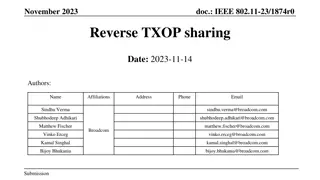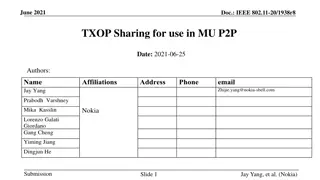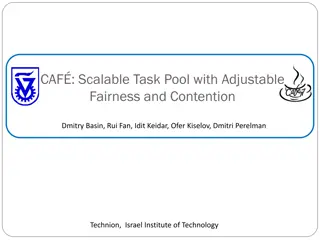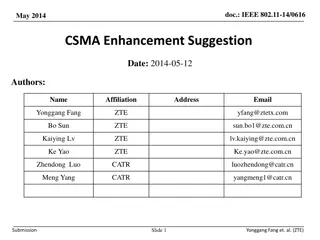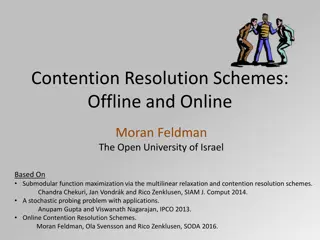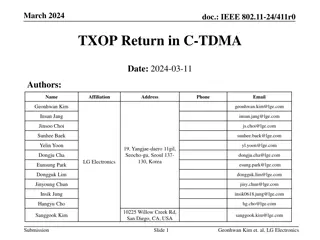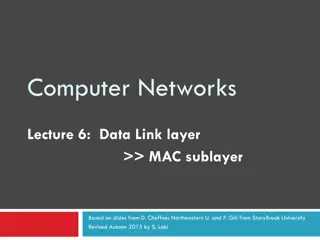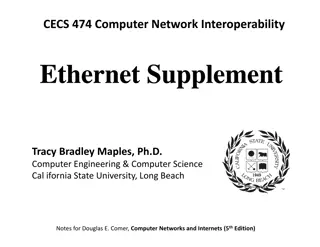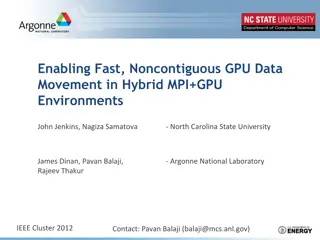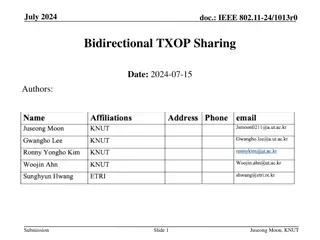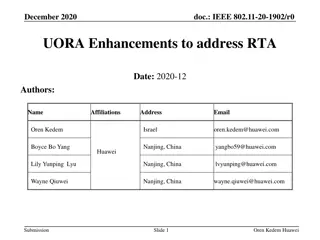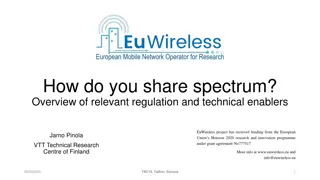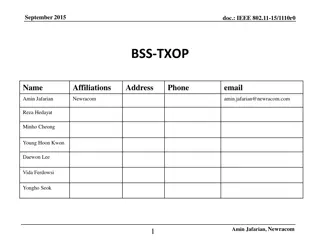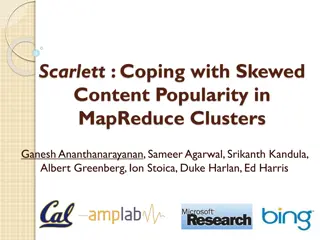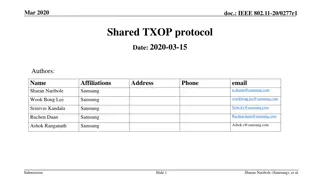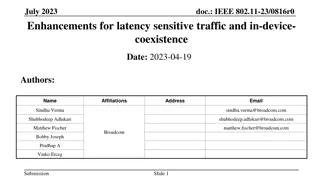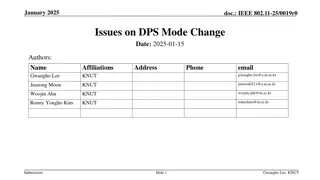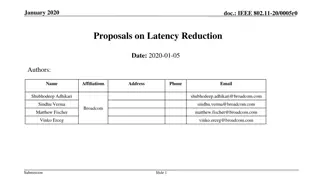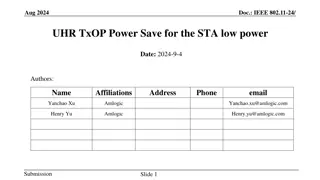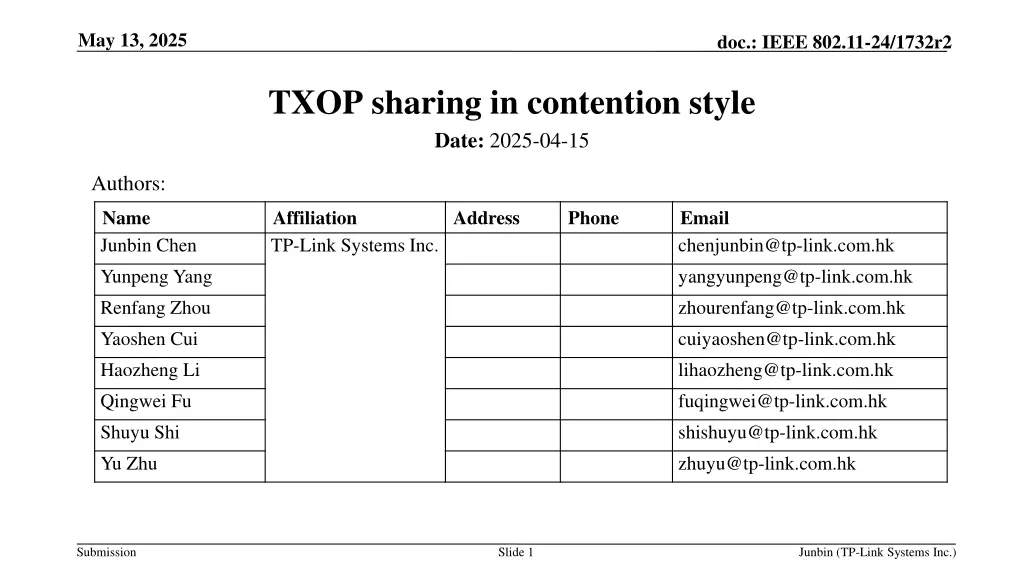
TXOP Sharing in IEEE 802.11-24: Co-TDMA for Efficient AP Communication
Explore the Co-TDMA protocol for TXOP sharing in IEEE 802.11-24, addressing issues like aperiodic IDC problems and event-based low latency traffic. The proposal suggests TXS with puncturing mode to enhance shared AP bandwidth efficiency. Join the discussion on improving AP communication efficiency.
Download Presentation

Please find below an Image/Link to download the presentation.
The content on the website is provided AS IS for your information and personal use only. It may not be sold, licensed, or shared on other websites without obtaining consent from the author. If you encounter any issues during the download, it is possible that the publisher has removed the file from their server.
You are allowed to download the files provided on this website for personal or commercial use, subject to the condition that they are used lawfully. All files are the property of their respective owners.
The content on the website is provided AS IS for your information and personal use only. It may not be sold, licensed, or shared on other websites without obtaining consent from the author.
E N D
Presentation Transcript
May 13, 2025 doc.: IEEE 802.11-24/1732r2 TXOP sharing in contention style Date: 2025-04-15 Authors: Name Junbin Chen Yunpeng Yang Renfang Zhou Yaoshen Cui Haozheng Li Qingwei Fu Shuyu Shi Yu Zhu Affiliation TP-Link Systems Inc. Address Phone Email chenjunbin@tp-link.com.hk yangyunpeng@tp-link.com.hk zhourenfang@tp-link.com.hk cuiyaoshen@tp-link.com.hk lihaozheng@tp-link.com.hk fuqingwei@tp-link.com.hk shishuyu@tp-link.com.hk zhuyu@tp-link.com.hk Submission Slide 1 Junbin (TP-Link Systems Inc.)
May 13, 2025 doc.: IEEE 802.11-24/1732r2 Abstract In TGbn D0.2 [1-2] we have defined the Co-TDMA to enable an AP to share a time portion of an obtained TXOP with one or more other APs to transmit one or more PPDUs. The procedure contains a polling phase, a TXOP allocation phase and a possible TXOP return phase [1-5]. Basically, the TXOP allocation is scheduled by the sharing AP based on the information collected during the polling phase. However, sometimes the polled AP may not be able to report it in time during the polling phase. E.g., due to aperiodic IDC issues occurred in the polled AP [6]; or, the event-based low latency (EBLL) traffic [7-9] just arrives after the polling phase. Besides, the EBLL traffic may come to the sharing AP during the TXOP allocated to shared AP. In this presentation, we d like to discuss about the Co-TDMA for handling the issues above. Slide 2 Submission Junbin (TP-Link Systems Inc.)
May 13, 2025 doc.: IEEE 802.11-24/1732r2 The Co-TDMA in TGbn There still remains several issues in the Co-TDMA of previous contributions: 1. If the LL traffic of sharing AP arrives during the TXOP allocation phase, it waits until TXOP return. MU-RTS TXS LL traffic arrives and suffers delay Data transmission Sharing AP TXOP return CTS Data transmission Shared AP 2. The sharing AP needs to collect the information of the pending LL traffic of multiple shared APs and determines which shared AP to be the TXOP Sharing (TXS) responder based on such information. However, the information collection can be quite difficult for the event-based Low Latency (EBLL) traffic. MU-RTS TXS MU-RTS TXS BSRP Sharing AP1 Data TXOP return LL traffic arrives CTS BSR Shared AP2 transmission Data TXOP return LL traffic arrives CTS BSR Shared AP3 transmission EBLL traffic arrives and suffers delay BSR Shared AP4 Submission Slide 3 Junbin (TP-Link Systems Inc.)
May 13, 2025 doc.: IEEE 802.11-24/1732r2 Proposal 1: TXS with puncturing mode We propose to define a mode that: The sharing AP can share a subset of its bandwidth to the shared AP(s), and operate with the remaining bandwidth in the puncturing mode during the allocated duration. In such mode, the sharing AP is still available to deliver any possible LL traffic arrived during the allocated TXS duration in puncturing mode. Further, the sharing AP may announce multiple bandwidth units (BWUs) for multiple shared APs. The granularity of BWUs here can be 20MHz for simplicity. LL traffic arrives to AP1 and can be delivered Data transmission in puncturing mode MU-RTS TXS Sharing AP1 BWU1 shared to AP2 BWU2 shared to AP3 ICF Data transmission Shared AP2 CTS Data transmission on BWU1 ICR Shared AP3 CTS Data transmission on BWU2 ICR Submission Slide 4 Junbin (TP-Link Systems Inc.)
May 13, 2025 doc.: IEEE 802.11-24/1732r2 Proposal 2: allow contention in TXS duration Considering the mode that sharing AP do not require for a TXOP return: The shared AP may finish the transmission earlier than the allocated duration ends. The other APs can try to contend for such a remaining duration. The number of shared APs allowed to participate in the contention can be limited by sharing AP (will be discussed later). Allocated duration Data MU-RTS TXS Sharing AP1 ICF transmission Shared AP2 CTS Data transmission ICR Shared AP3 Win the remaining TXOP ICR Submission Slide 5 Junbin (TP-Link Systems Inc.)
May 13, 2025 doc.: IEEE 802.11-24/1732r2 Combine with both proposals If combined with both the proposals, then we can achieve such a flexible Co-TDMA scheme: A sharing AP may announce more than one BWUs to more than one shared APs. The sharing AP may assign a contention-free period of a RA-BWU to a specific shared AP, after which the other polled APs can start to contend for the RA-BWU. Polled APs that does not successfully report its requirement can try to contend for a BWU. The contention can be P-EDCA-based or UORA-based, TBD. Data transmission in puncturing mode Data MU-RTS TXS Sharing AP1 ICF BWU1 for AP2 transmission RA-BWU2, (AP3 contention-free) Shared AP2 CTS Data transmission on BWU1 ICR Shared AP3 Data transmission Contention-free CTS ICR Shared AP4 Win RA-BWU2 ICR Submission Slide 6 Junbin (TP-Link Systems Inc.)
May 13, 2025 doc.: IEEE 802.11-24/1732r2 The priority of shared APs 1. The BWU is determined to be RA-BWU based on different value between allocation duration and contention- free period. 2. The shared AP that is assigned a specific BWU is of the highest priority during the contention. 3. The sharing AP can announce some constraints (e.g. the delay bound requirement) to alleviate the contention. For example, only the shared APs whose delay bound of the pending LL data is lower than the announced requirement can participate in the contention. An exemplary of the MRTT frame can be defined as follow. MAC Header Common info User info list Padding FCS BWU index BWU size Allocation duration Contention-free period Delay requirement APID 4. The contention here can be performed in a similar way as EDCA, or in the UORA contention style. In P-EDCA style, the shared APs shall initiate a TXS back-off counter based on the delay bound of pending LL data. In UORA style, the shared AP shall invoke the OBO contention procedure and transmit a RTS to protect its following transmission. Submission Slide 7 Junbin (TP-Link Systems Inc.)
May 13, 2025 doc.: IEEE 802.11-24/1732r2 Summary The polled AP might not be able to report its requirements in time during the polling phase. The polled AP might suffer aperiodic IDC issues. The arrival of event-based low-latency (EBLL) traffic is unpredictable to the sharing AP. The sharing AP has to query the buffer status of multiple shared APs over and over again. The EBLL traffic of sharing AP may also arrive during the TXS procedure and suffer significant delay. In this presentation, we proposed a special TXS mode for EBLL traffic/aperiodic IDC. - The sharing AP can reserve some BWUs to serve its associated STA during the TXOP allocation phase. - The other BWUs can be assigned to or contended by multiple shared APs with LL traffic. - The priority of multiple shared APs can be distinguished by designing the contention procedure. Submission Slide 8 Junbin (TP-Link Systems Inc.)
May 13, 2025 doc.: IEEE 802.11-24/1732r2 References [1] P802.11bn D0.2 [2] 25/0521 PDT-MAC-Co-TDMA-CR-CC50-Part-1, Sanket Kalamkar (Qualcomm Technologies Inc.) [3] 23/1871 M-AP Coordinated Transmission framework, Arik Klein (Huawei) [4] 24/0512 Considerations for Coordinated TDMA, Rubayet Shafin (Samsung Electronics) [5] 24/0411 TXOP Return in C-TDMA, Geonhwan Kim (LG Electronics) [6] 24/1504 Considerations on Aperiodic In-device Coexistence, Hyeonjun Sung (WILUS Inc.) [7] 24/0811 Overlapped indication for aperiodic low latency traffic, Daniel Verenzuela (Sony Group Corporation) [8] 24/0091 Enhanced Scheduling Method for Low Latency Traffic Follow up, Serhat Erkucuk (Ofinno) [9] 23/1229 Preemption for Low Latency Application (follow up), Juan Fang (Intel) Submission Slide 9 Junbin (TP-Link Systems Inc.)
May 13, 2025 doc.: IEEE 802.11-24/1732r2 Straw Poll 1 Do you agree to define a Co-TDMA mode in 11bn, in which mode the sharing AP can still serving its associated STA during the allocated period? The sharing AP may share a subset rather than the whole of its operating bandwidth to shared AP(s). The sharing AP may operate with a reserved bandwidth in puncturing mode for the allocated period. Operation details for such mode are TBD. Submission Slide 10 Junbin (TP-Link Systems Inc.)
May 13, 2025 doc.: IEEE 802.11-24/1732r2 Straw Poll 2 Do you agree to define a Co-TDMA mode in 11bn, in which mode the remaining allocated TXOP can be contended by polled AP(s) other than the assigned shared AP(s)? In such mode the sharing AP does not require for a TXOP return. The polled APs other than the assigned shared AP(s) may initiate the contention only after a BWU is released. The contention can be P-EDCA-based or UORA-based, details are TBD. The sharing AP may announce some constraints to alleviate the contention. Submission Slide 11 Junbin (TP-Link Systems Inc.)

